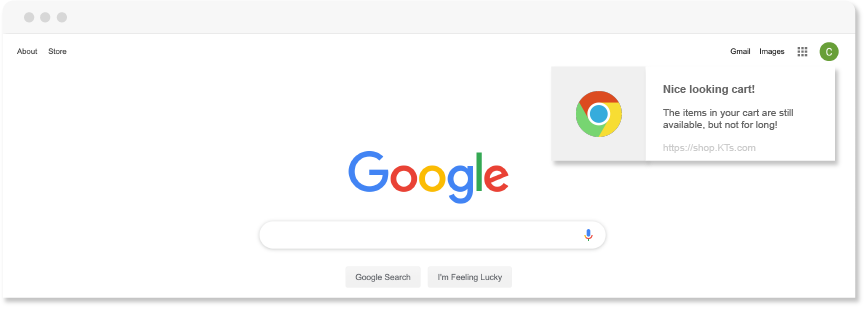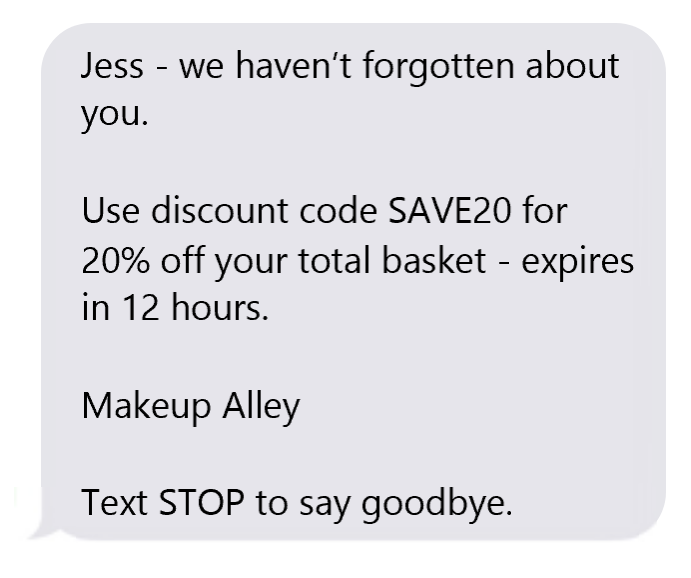How To Drive Direct Sales & Keep More Of Your Profits This Holiday Season
November 18, 2020
The holidays – a time for goodwill, food, drink, and profits. Last year, holiday sales rose by 13.1%, with Americans spending an eye-watering $142.5 billion online, and this year online sales are predicted to reach 30% of total retail sales. Grand news if you’re Amazon, but what if you sell directly on your ecommerce website too?
Selling through online marketplaces is a savvy way to increase your ecommerce business’ reach, brand presence, and sales. But online marketplaces such as Amazon take a cut off the final total, meaning that you don’t keep all of your profits – and during the holiday season, this hits hard.
But it doesn’t have to be this way. By driving direct sales to your ecommerce website, you get to keep more of your profits this holiday season – and we’re here to show you how, with the gift of five actionable tips for directing online sales away from Amazon and directly to your store – t’is the season for sharing, after all.
Recap: The Importance of Direct Ecommerce Sales
Before we look at how to drive sales directly to your ecommerce store, let’s first cover why direct conversions are important.
Profits
First and foremost, you make more profit selling products directly on your website than you do selling on online marketplaces. For example, Amazon charges a referral fee of between 8% to 15% on every sale – that’s a significant chunk of your profit margin that you never see. When you sell directly on your website, you bypass marketplace referral fees, allowing you to make more money for you.
Branding
Driving direct sales through your website allows you to build your brand through storytelling, images, copy, and communications – something you just can’t do on Amazon. Having space and freedom to develop your brand in this way allows you to resonate with your target audience and cement your name in their mind – essential for creating brand loyalty.
Loyalty
Speaking of loyalty, it’s easier building customer loyalty and driving customer lifetime value when selling on your ecommerce website. Not only do website visitors form a direct relationship with you (rather than the marketplace), but you can also implement user accounts, loyalty programs, and marketing campaigns that enhance this relationship and encourage repeat purchases.
Experience
You own the checkout flow on your ecommerce website, which means you can enhance the customer journey by making it easier, more engaging, and more enjoyable shopping with you. This positive experience feeds into positive reviews, recommendations, and return visits – generating even more profits.
Customer recovery
Finally, and we think most importantly, the more direct visitors to your website, the more opportunity you have to recover those who don’t make it through the checkout. Amazon and eBay don’t tell you if someone added a product to their cart but didn’t complete their purchase, so you can’t attempt to recover them. With the right tools on your website, you can reduce abandonment from happening in the first place, and recover customers when it does.
Want to learn more about recovering lost customers? Start with part one in our three-part complete guide to customer recovery: How To Capture Ecommerce Leads & Drive Conversions
How To Increase Direct Sales During The Holidays
The trouble is, marketplaces like Amazon are big retail giants with the budget, resources, market dominance, and household name to drive sales directly to them. How can you compete?
While it feels incredibly daunting standing up to the likes of Amazon, we’re entering an unusual holiday season. Consumers are savvier about buying online and more driven to support smaller businesses; if ever there was a time to increase direct online sales, it’s now.
How? These five actionable steps can get you started:
1. Expand beyond your marketplace
If you only sell on Amazon, eBay, or Walmart right now, then the first step is building an ecommerce website to sell directly from.
Building an ecommerce website is as simple or involved as you want it to be, depending on the ecommerce platform you use. Our top recommendations are:
Volusion
Volusion is an all-in-one platform that doesn’t require coding to build. You choose from an extensive selection of themes and use the built-in order system, SEO tools, and CRM functionality to grow your store.
Webflow
Webflow’s ecommerce platform powers you to build a production-ready ecommerce site, using responsive themes, built-in marketing tools, and flexible third-party integrations. The Webflow Editor also allows you to create and edit content directly on the page, with no need for complex backend amendments.
3dcart
3dcart is a powerful ecommerce tool that comes with plenty of themes, features, and tools for creating an online store and managing direct sales. There are also hundreds of apps and integrations for growing your business and streamlining your processes.
2. Provide an Amazon-like service
Amazon has set the standards for buying online, which is why 89% of consumers are more likely to purchase products from Amazon than any other ecommerce site.
For your ecommerce store to stand alongside Amazon and attract direct sales, you must first offer an Amazon-like service to meet customer needs and provide a sense of familiarity. What do we mean by an Amazon-like service?
Fast shipping
Amazon is synonymous with fast shipping and has made two-day and next-deliveries the eCommerce standard. Therefore, you must offer expedited shipping speeds to match, by optimizing your in-house fulfillment processes or outsourcing to a fast shipping fulfillment partner.
Free shipping
Prime customers have unlimited free Amazon shipping, and non-Prime customers have free shipping on orders over $25. If you don’t offer customers a free shipping option, your products immediately appear more expensive, and Amazon immediately becomes more attractive. If you’re struggling to provide free shipping without drastically reducing your profit margins, consider using software such as ShipStation to find the cheapest shipping carriers and methods.
Product selection
One of the popular aspects of Amazon is that it has everything you need and lots of it. To match Amazon, you must provide customers with an exciting selection of products while ensuring you hold enough stock to meet demand. Inventory management or multi-channel ecommerce software improves inventory efficiency to avoid selling out of stock and forcing customers back to Amazon.
3. Do things better than Amazon
Providing an Amazon-like service is great for meeting Amazon at its game, but you want to beat Amazon at its game. When you do things better than Amazon you give customers a reason to buy directly from you this holiday season.
Amazon has exhausted low prices and fast shipping – you can match Amazon’s prices and shipping speeds, but beating them won’t increase your profits. Therefore, you must be creative.
Some ideas to get you going include:
Exclusive products
Selling something that isn’t available on Amazon or eBay is a quick way to drive direct sales. Since Amazon sells pretty much everything, use your ecommerce website to sell limited editions, unique designs, or personalized products.
Loyalty program
A customer loyalty program is an immediate benefit for customers shopping directly with you rather than Amazon. You can create a loyalty program that rewards customers with discounts and money off for buying products, recommending friends, or reaching different spending levels.
Subscriptions
While Amazon offers a subscription service for everyday items, it hasn’t yet delved into the subscription box arena. If you can provide customers with an option for custom, unique, or surprise subscriptions (a great Christmas gift, by the way), you can attract attention away from Amazon while also generating repeat direct conversions.
Customer experience
Shopping on online marketplaces is akin to shopping in a large physical store – you’re just a number. By changing online shopping from a chore to an experience, you immediately transform the dynamics and connect directly with customers, attracting them to buy directly from you. Think personalization, product recommendations, SMS messages, social media engagement, and genuinely caring about your customers as people.
4. Increase direct visitors
One of the hardest challenges of driving direct online sales is increasing the number of direct visitors to your website. Nearly half of shoppers start their product search directly on Amazon, and you need to stop them somehow.
The good news is that shoppers are becoming more internet savvy and capable of shopping around. Plus, the bigger Amazon and other marketplaces become, the more people want to avoid them to support smaller businesses.
How can you reach these shoppers and bring them to your website?
Advertising & social media
With the release of Facebook and Instagram Shops, social commerce will become bigger this Christmas. Use this rise in social shoppers to increase brand awareness and spark engagement, using PPC ads and social media posts across Facebook, Instagram, Pinterest, and the social platforms your audience frequents.
SEO & Google Shopping
Google comes into its own during the holiday season. Millions of shoppers use the search engine for gift inspiration or to research products they rarely buy for themselves. Target this surge in searchers by using Google Shopping ads to promote your products, and SEO tactics to rank your website.
Customer referrals
Shoppers are four times more likely to make a purchase directly when referred by family or friends, making customer referrals a powerful tool for driving direct sales. Use rewards and incentives to encourage referrals and benefit from the direct sales that follow.
Fanbases
If you sell a unique product that targets a niche audience, use them. A loyal fan base is an ecommerce seller’s dream because they drive direct sales themselves, merely because you satisfy their niche needs. Fanbases require lots of engagement, so research where your fans hang out online and offline and begin making connections.
5. Recover lost visitors
And finally, to our favorite part of this guide, customer recovery.
No matter how hard you try, there are always shoppers who make it to your website, shop around, even add products to their basket, and then head to Amazon or another marketplace to compare prices and options before converting. This form of abandonment is especially common during the holiday season when budgets are tighter, indecision is rife, and distractions are tempting.
To drive the most direct sales possible, you must quickly recapture the attention of shoppers who stray from your website, giving them a reason to come back and buy.
Since the holidays are a notoriously hectic time of year, the best way to do this is using a multi-channel recovery approach. A multi-channel approach increases the chances of reengaging these customers before they convert over on Amazon by using a variety of recovery tools, including:
Abandoned tab notifications

Abandoned tab notifications target shoppers immediately once they open a new browser tab, by sounding an alert and changing the tab favicon and headline. You bring their attention back to your website and remind them you’re still there while they compare prices and conduct research.
Push notifications

Abandoned cart push notifications deliver a short message and image directly in the corner of a customer’s web browser – even if they’re browsing Amazon. This short, sharp message immediately engages attention, reminds the customer about your website, and gives them a reason to return (e.g., a discount or low stock levels).
SMS messages

Very few people leave an SMS unread. 90% of messages are opened with three minutes of receipt, which is extremely useful if you want to reach a customer who’s currently browsing elsewhere. Benefit from the power of text messages by sending SMS abandoned cart messages to those who left your website, enticing them back with information or offers.
Further reading: Recovering Lost Ecommerce Sales with Abandoned Cart Text Messages
Retargeting adverts
Holiday shopping involves a lot of browsing and procrastination – use it to your advantage. Retargeting ads target people who have been on your website, filling ad space across the internet with your products. The more often a potential customer sees your brand and products, the more they come to recognize you and remember you for when they’re ready to buy.
Recovery emails
And finally, the trusted recovery email. Customers benefit from buying directly, with more product options, personalized services, and an overall enhanced experience. Yet, few customers realize this, which is why they abandon during the consideration and awareness phases of the customer journey.
Cart abandonment and browse abandonment emails give you the time and space to show the benefits of buying from you directly, using eCommerce persuasion tactics such as:
- Personalization to show you care about the customer and want to help them.
- Product recommendations to make it easier to shop with you.
- Information about shipping, payment methods, and returns to create feelings of trust.
- Unique offers and discounts to show you appreciate their custom.
- Storytelling to build an emotional connection and desire to support you.
Bringing It All Together
That’s a lot of information to take in, but the message is clear: driving direct sales to your website is better for profits, brand, reputation, and growth. It’s also better for your customers too, giving them the service they deserve.
While taking on Amazon might feel like a monumental task, it only comes down to five simple steps:
- Provide a place for shoppers to buy directly from you.
- Match the service provided by Amazon.
- Exceed the service provided by Amazon.
- Tell customers about your ecommerce website.
- Recover the customers who didn’t make it through the checkout the first time – because there’s always a second time.
Good luck and happy holidays.





